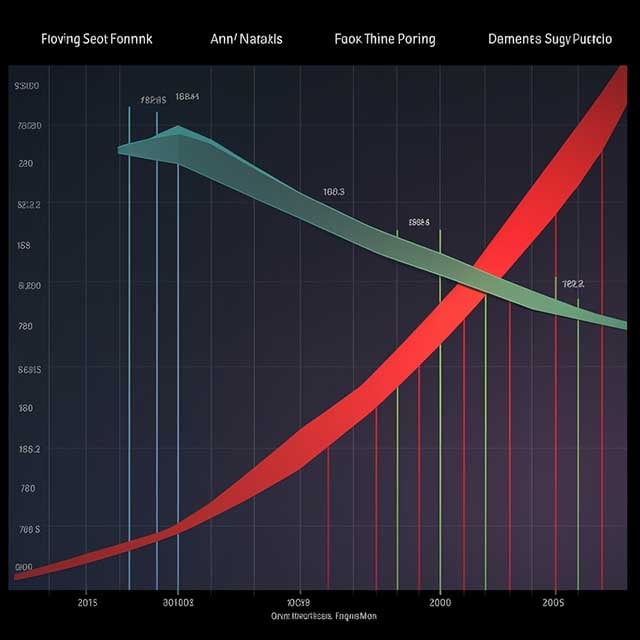Debunking 15 Common Social Media Myths
- Home
- Debunking 15 Common Social Media Myths
When it comes to social media myths, there are plenty of misconceptions that can lead even the most experienced marketers astray. Companies and brands are often led astray by these mistakes but are increasingly calling on the services of AI consultancy firms to help navigate this landscape.
Staying informed about common misconceptions is essential for developing an effective marketing strategy in the ever-changing social media landscape.
In this comprehensive blog post, we will debunk several prevalent social media myths about platform selection, timing and engagement tactics, content quality over quantity strategies, monitoring software necessities, age-related stereotypes about user behaviour, and traffic generation analysis. By discrediting these common misconceptions, you can be better prepared to approach your social media endeavours with a more calculated outlook and attain greater results for your enterprise.
Table of Contents:
- Debunking Platform Myths
- Myth 1: You need to be on every platform
- Myth 2: Facebook is dead for businesses
- Myth 3: LinkedIn is only for B2B companies
- Timing and Engagement Misconceptions
- Myth 4: There's a universal best time to post on each platform
- Myth 5: High engagement guarantees success
- Myth 6: Posting more frequently always leads to better results
- Content Quality Over Quantity Fallacies
- Myth 7: Viral Content Should Be the Primary Goal
- Myth 8: Repurposing Old Content Isn't Effective
- Myth 9: Visuals Aren't Important
- Social Media Monitoring Myths
- Myth 10: Social Media Monitoring Software Isn't Necessary
- Myth 11: Hootsuite, TweetDeck, And Other Similar Tools Are Enough
- Age-Related Social Media Stereotypes
- Myth 12: Social Media is Only for Young People
- Myth 13: Older Demographics Don't Engage with Ads on Social Platforms
- Analyzing Traffic Generation Myths
- Myth 14: All social media platforms generate equal amounts of traffic
- Myth 15: Organic reach is dead, so paid advertising is the only way to succeed
- Social Media Myths: Debunking Common Misconceptions
- What are social media myths?
- Did you know facts about social media?
- What is the difference between digital and social media?
- What is the definition of social media?
- Debunking Common Social Media Myths
- Conclusion
Debunking Platform Myths
Not all social media platforms are suitable for every business. It's essential to devote time and resources only to the platforms that best suit your audience and marketing tactics. This section will explore and dispel some misconceptions about social media networks.
Myth 1: You need to be on every platform
While it might seem like a good idea to have a presence on every possible social media platform, spreading yourself too thin can lead to wasted efforts and diminishing returns. Instead of trying to maintain profiles on each site, focus on the ones where your target audience is most active. HubSpot has an excellent guide for choosing the right networks for your business.
Myth 2: Facebook is dead for businesses
The decline in organic reach has led many marketers to believe that Facebook is no longer a viable business option. However, with over 2 billion monthly active users worldwide, Facebook remains one of the largest online communities available today. Companies can still achieve success through this powerful platform by using targeted advertising campaigns and engaging content tailored specifically to their audiences.
Myth 3: LinkedIn is only for B2B companies
This misconception originates from LinkedIn's status as a professional social media site mainly utilized by job seekers and hiring managers; yet, it additionally offers beneficial possibilities for B2B and B2C firms wishing to establish contact with prospective clients. With its LinkedIn Pages feature, businesses can showcase their products, services, and company culture while engaging with a highly targeted audience of professionals.
Key Takeaways:
- Instead of trying to maintain profiles on every social media platform, focus on the ones where your target audience is most active.
- When used strategically, Facebook remains a powerful platform for businesses through targeted advertising campaigns and engaging content explicitly tailored towards their audiences.
- LinkedIn's Pages feature offers valuable opportunities for B2B and B2C brands to connect with potential customers.
Focusing on the right platforms is crucial for making the most of your social media marketing efforts. By debunking these common myths, you'll be better equipped to choose which networks best suit your business needs and ultimately achieve tremendous success in reaching your growth targets.
Realizing the misconceptions related to each platform is critical for successful marketing utilization. Moving on, timing and engagement misconceptions are just as relevant to social media success—let's explore these further.
Key Takeaway:Don't believe the myths surrounding social media platforms. Instead of trying to be present on every site, focus on the ones where your target audience is most active and use targeted advertising campaigns and engaging content tailored specifically towards their audiences to achieve success through Facebook and LinkedIn Pages feature for both B2B and B2C brands looking to connect with potential customers.

Timing and Engagement Misconceptions
Identifying when your audience uses social media platforms the most is crucial in encouraging them to interact with your content. In this section, we'll address misconceptions related to timing, engagement rates, and post frequency.
Myth 4: There's a universal best time to post on each platform
The notion of a single, all-encompassing approach to post times across the board is inaccurate. While specific studies may suggest optimal times for posting on various platforms, it's essential to understand that these recommendations are not universally applicable. Your target audience might have different habits or preferences than other companies. To determine the best posting times for your business, analyze your data using tools like HubSpot Analytics.
Myth 5: High engagement guarantees success
Achieving success with content is not guaranteed just because of high engagement; instead, it's essential to consider how the engagements impact other metrics such as CTR and ROI. It's essential to focus on increasing engagements and ensuring they lead towards achieving specific goals such as website visits or conversions. For example, Hootsuite suggests focusing on metrics like click-through rate (CTR), conversion rate and return on investment (ROI) alongside measuring engagements.
Myth 6: Posting more frequently always leads to better results
Increasing the number of posts you publish daily may seem like an effective way to boost engagement, but it's not always the case. The key is finding a balance between posting frequency and content quality. Overposting can lead to audience fatigue or unfollowing if your content isn't valuable or relevant.
- Quality over quantity: Focus on creating high-quality content that resonates with your target audience rather than just increasing post volume.
- Analyze performance: Regularly review your social media analytics to determine which types of posts perform best and adjust your strategy accordingly.
- A/B testing: Experiment with different posting frequencies for each platform and measure their impact on engagement rates using tools like HubSpot Social Media.
In summary, debunking timing and engagement misconceptions will help you optimize your social media marketing efforts by focusing on what truly matters: understanding when and how often to post while ensuring the quality of the content you share aligns with user preferences and overall business goals.
It is important to be aware of timing and engagement misconceptions in order to create an effective social media strategy. When formulating productive social media campaigns, content should be prioritized over amount.
Key Takeaway:To optimize social media marketing efforts, it's important to understand that there is no universal best time to post on each platform and engagement rates do not guarantee overall success. Instead, focus on creating high-quality content that resonates with your target audience while finding a balance between posting frequency and content quality. Analyze performance regularly and experiment with different posting frequencies for each platform using tools like HubSpot Social Media.
Content Quality Over Quantity Fallacies
In the world of social media marketing, it's easy to believe that more content equals better results. However, focusing on quality over quantity can generate value beyond just "engagement" and "brand equity." This section will tackle some common myths surrounding content creation strategies and how they impact marketing efforts.
Myth 7: Viral Content Should Be the Primary Goal
While achieving viral success may seem like a dream come true for any marketer, it shouldn't be your primary goal when creating content for social media. Instead, create shareable and valuable content that resonates with your target audience. Content that appeals to your target demographic and is worth sharing will help you cultivate lasting connections with followers and direct continuous web traffic.
Myth 8: Repurposing Old Content Isn't Effective
Contrary to popular belief, repurposing old content can be a highly effective strategy. In fact, updating and re-sharing evergreen articles or posts can give new life to previously published materials while saving time in producing fresh information. By adding new insights or updates to existing material, you're able to maximize its potential reach, engage with a wider audience segment who might have missed it initially, or appeal again to those who found value in it before.
- Action Tip: Review older blog posts or articles on topics still relevant today; update them by including recent statistics or developments within their respective industries before sharing them once more across appropriate platforms.
Myth 9: Visuals Aren't Important
Visuals are essential for engaging your audience and increasing the overall appeal of your content. According to HubSpot research, tweets with images receive 150% more retweets than those without, while Facebook posts with images see an average of 2.3 times more engagement than text-only updates.
To maximize visuals on social media, consider incorporating formats such as infographics, videos, or GIFs that align well with your brand identity and message. Remember that high-quality visuals improve user experience and increase the likelihood of shares and conversions.
- Action Tip: Experiment with different visual formats when creating content for social media platforms; track their performance through analytics tools like HubSpot to identify which types resonate best among your target audience segments.
Understanding content quality over quantity fallacies is essential when creating a successful social media marketing strategy. To maximize success, it is important to move beyond the myths and look at what monitoring software can do for your business.
Key Takeaway:When it comes to social media marketing, quality content is more important than quantity. Creating shareable and valuable content that resonates with your target audience can help build long-term relationships and drive consistent traffic to your website. Repurposing old content by updating it with new insights or updates can also provide new life while saving time in producing fresh pieces of information. Additionally, incorporating high-quality visuals such as infographics, videos, or GIFs can improve user experience and increase the likelihood of shares and conversions.
Social Media Monitoring Myths
In today's fast-paced digital world, social media monitoring software plays a crucial role in helping businesses manage their online presence. However, misconceptions about these tools can hinder the proper utilization of these valuable resources. This section addresses misconceptions about social media monitoring software to enable informed decisions.
Myth 10: Social Media Monitoring Software Isn't Necessary
Some may argue that manually tracking your brand's mentions and interactions across various platforms is sufficient for managing your online reputation. However, manually monitoring mentions and interactions is labour-intensive and has the potential for mistakes. Social media monitoring software automatically alerts you when essential terms are mentioned on social media platforms or other websites. This allows you to respond promptly to customer inquiries or negative feedback while identifying potential opportunities for engagement and growth.
Myth 11: Hootsuite, TweetDeck, And Other Similar Tools Are Enough
Hootsuite, TweetDeck, and similar tools offer excellent features for scheduling posts and tracking basic analytics across multiple platforms simultaneously. While they provide an efficient way to manage your day-to-day social media activities, they might not be enough if you seek more advanced insights into audience behaviour or sentiment analysis.
For a comprehensive understanding of how users perceive your brand online beyond likes and shares, consider investing in specialized monitoring tools like Mention, Brandwatch, or Awario. These platforms provide in-depth analysis of user-generated content, helping you identify trends and patterns that can inform your overall marketing strategy.
Moreover, some businesses may require industry-specific monitoring tools to track conversations relevant to their niche. For example, ReviewTrackers focuses on online reviews for local businesses, while Nuvi specializes in social listening for the hospitality sector. By choosing a tool tailored to your unique needs, you'll be better equipped to make data-driven decisions that drive growth.
- Action Item: Evaluate your current social media monitoring setup and determine if it provides the insights necessary for informed decision-making. If not, research specialized tools designed for your industry or specific goals.
- Action Item: Set up alerts within your chosen monitoring software to notify you when important keywords or phrases are mentioned across various platforms. This will help ensure timely responses and proactive engagement with users discussing topics related to your brand.
Incorporating effective social media monitoring into your marketing strategy is essential for staying ahead of the competition and maintaining a solid online presence. Don't let misconceptions about these valuable tools keep you from maximizing their potential benefits.
Monitoring tools can significantly aid any social media plan and should not go unnoticed. Moving on from this topic, it's also important to dispel the myths surrounding age-related stereotypes of social media users.
Key Takeaway:Social media monitoring software is crucial for managing a brand's online presence. Misconceptions about these tools, such as the belief that they are unnecessary or that basic tools like Hootsuite and TweetDeck are enough, can hinder their proper utilization. Specialized monitoring tools tailored to specific industries or goals provide in-depth analysis of user-generated content, helping businesses make data-driven decisions for growth.

Age-Related Social Media Stereotypes
Demographics shouldn't be overlooked when it comes to social media marketing. In this section, we will debunk age-related myths and emphasize the importance of considering all potential target audiences.
Myth 12: Social Media is Only for Young People
It's a widespread belief that the younger generation mainly utilizes social media. While young adults are more likely to use these platforms, older demographics have also embraced them in recent years. According to Datareportal's Global Overview Report, over half of internet users aged 55-64 use Facebook, while LinkedIn has seen significant growth among users aged 45 and above.
To ensure your marketing efforts reach a wider audience, consider creating content tailored to different age groups on appropriate platforms. For example, you might share industry news on LinkedIn for an older demographic or post engaging visuals on Instagram targeting younger followers.
Myth 13: Older Demographics Don't Engage with Ads on Social Platforms
This myth implies that advertising efforts should focus solely on younger audiences since they're perceived as more receptive to online ads. However, research shows that older individuals can be just as responsive—if not more so—to well-crafted advertisements.
- Baby Boomers: A study conducted by MediaPost found that Baby Boomers are more likely to engage with digital ads than their younger counterparts. They're also more inclined to purchase after seeing an ad, making them a valuable business target audience.
- Generation X: According to Sprout Social, Gen X users spend almost seven hours weekly on social media and have the highest brand loyalty rate among all age groups. This makes them prime candidates for targeted advertising campaigns.
To effectively reach older demographics, consider using platforms like Facebook and LinkedIn, where they're most active. Additionally, address their needs or interests directly to ensure your ad content is relevant and engaging.
Incorporating these insights into your marketing strategy will help you tap into the potential of diverse age groups on social media platforms. By debunking these myths and understanding the nuances of different demographics, you can create well-rounded campaigns that resonate with various audiences—ultimately driving better results for your business.
Age-related social media stereotypes are often inaccurate and should be challenged. Assessing traffic-building beliefs is essential to taking informed steps to ensure your enterprise's prosperity.
Key Takeaway:Don't overlook demographics when it comes to social media marketing. Contrary to popular belief, older generations are also active on social platforms and can be just as responsive to well-crafted ads. To effectively reach diverse age groups, tailor your content for different platforms and address their needs or interests directly in your advertising campaigns.
Analysing Traffic Generation Myths
Understanding how much traffic your social media efforts drive to your website is crucial in evaluating their effectiveness. This section will address common misconceptions about traffic generation from various platforms.
Myth 14: All social media platforms generate equal amounts of traffic
Contrary to popular belief, the traffic generated from different social media platforms can vary significantly depending on user base and content preferences. Each platform has its unique user base and content preferences, which means some may work better for specific industries or target audiences than others. For example, Instagram might drive more sales for fashion brands, while LinkedIn could be more effective for B2B companies seeking to generate leads.
To identify which platform works best for you, it's essential to analyze data on where most of your website visitors come from and focus on those channels that yield higher results. Tools like the HubSpot Marketing Analytics Dashboard can help you track these metrics easily.
Myth 15: Organic reach is dead, so paid advertising is the only way to succeed
The decline in organic reach across multiple social media platforms has led many marketers to believe that paid advertising is now the only viable option for generating significant website traffic. While it's true that algorithms have made organic visibility harder than before, this doesn't mean businesses should abandon their non-paid strategies altogether.
- Create high-quality content: Content remains king in driving engagement and traffic. Focus on producing valuable, shareable content that resonates with your target audience.
- Optimize for search: When creating content for social media, remember the power of SEO. Incorporate relevant keywords and optimize your posts to increase their visibility in search results.
- Leverage influencers: Partnering with influencers can help amplify your message and reach a broader audience without relying solely on paid advertising. This strategy can be particularly effective on platforms like Instagram, where organic reach is still relatively high compared to other channels.
In conclusion, it's essential not to fall victim to common myths surrounding social media-generated traffic. Recognise that each platform has its strengths and weaknesses when it comes to driving website visitors, and focus on those most suited to your business goals. Additionally, don't abandon organic strategies entirely—by effectively combining both paid and non-paid tactics, you'll maximize the potential of these powerful marketing tools.
Key Takeaway:Social media myths are debunked in this section of the inbound marketing article. It is a common misconception that all social media platforms generate equal amounts of traffic, but each platform has its unique user base and content preferences. While organic reach may have declined, businesses should not abandon non-paid strategies altogether and focus on creating high-quality content, optimizing for search, and leveraging influencers to maximize the potential of these powerful marketing tools.
Social Media Myths: Debunking Common Misconceptions
As a business owner, you may have heard various social media myths that can hinder your social media marketing efforts. This article will debunk some of the most common social media myths and provide insights to help you approach social media with a clear and effective strategy.
What are social media myths?
Social media myths refer to misconceptions or false beliefs about various social media platforms' functioning, impact, and best practices. These myths often arise from outdated information, generalizations, or misunderstandings of how specific platforms work. Debunking these myths can help businesses make informed decisions when developing their social media marketing strategy.
Did you know facts about social media?
Social media has a global user base of over 4 billion people and constantly evolves with new trends and features. Some interesting facts include:
- Facebook remains the most popular platform worldwide
- Instagram's Stories feature has surpassed Snapchat in daily active users
- LinkedIn generates more than 50% of all B2B social traffic
- TikTok was downloaded over 2 billion times by April 2023
What is the difference between digital and social media?
Digital media encompasses all electronic communication channels that transmit information digitally, including websites, email marketing campaigns, mobile apps, podcasts, etc. Social media refers to online platforms where users create and share content while engaging with others through likes, comments, and shares - examples include Facebook, Twitter, and Instagram.
What is the definition of social media?
Social media refers to web-based applications that enable individuals to create and exchange user-generated content within virtual communities or networks. These platforms facilitate interaction among users who share common interests or connections by allowing them to post text updates, photos, videos, and links and engage with other people's posts through liking, commenting, and sharing activities.
Debunking Common Social Media Myths
Myth #1: Social media success is all about the number of followers
Having a large following can indeed be beneficial for your social media efforts, but it's not the only factor that determines success. It's more important to have an engaged audience that interacts with your content and shares it with others. Quality over quantity is key.
Myth #2: Social media marketing is free
While creating a social media account is free, building a successful social media marketing strategy requires time, effort, and resources. Paid advertising, influencer marketing, and content creation are just a few marketing tactics requiring investment.
Myth #3: Social media algorithms are out to get you
It's a common misconception that social media algorithms are designed to limit the reach of your content. In reality, algorithms are designed to show users the most relevant and engaging content. Creating high-quality content that resonates with your target audience can improve your chances of appearing in their feeds.
Myth #4: Social media is only for young people
While younger generations tend to be more active on social media, people of all ages use it. Proper research into your target audience can help determine which platforms are most relevant to your ideal clients.
Myth #5: Negative reviews on social media will ruin your business
While negative reviews can damage your reputation, they can also allow you to showcase your customer service skills and willingness to address concerns. Responding to negative reviews professionally and empathetically can help you build meaningful connections with your audience.
Myth #6: Social media is the only marketing channel you need
Social media can be a powerful marketing tool, but it's important to remember that it's just one piece of the puzzle. To reach your target audience, a well-rounded marketing strategy should include a mix of channels, such as email marketing, content marketing, and paid advertising.
Myth #7: Social proof is not important
Social proof, such as customer reviews and testimonials, can be a powerful tool for building trust and credibility with your audience. Incorporating social proof into your social media marketing strategy can help showcase the value of your products or services and encourage people to interact with your brand.
Myth #8: Social media success happens overnight
Building a successful social media strategy takes time and effort. It is essential to have realistic expectations and understand that it may take months or even years to see significant results. Consistency and patience are key.
Myth #9: Trending topics are always relevant to your brand
While it can be tempting to jump on the latest trending topic, ensuring that it's relevant to your brand and aligns with your values is important. Posting about trending issues just for the sake of it can come across as inauthentic and may not resonate with your audience.
Myth #10: User-generated content is not valuable
User-generated content, such as customer photos and reviews, can be valuable to your social media marketing strategy. It provides social proof and can help you showcase your products or services more authentically. Encouraging people to interact with your brand and share their experiences can also help you build a more engaged community.
By debunking these common social media myths, you can approach social media with a clear and effective strategy that helps you achieve your business goals.
Conclusion
It's time to debunk some common Social Media Myths. From the idea that you need to be on every platform to the misconception that Facebook is dead for businesses, we've explored a range of myths and fallacies surrounding social media marketing. We've learned that high engagement doesn't always guarantee success, visual content is crucial, and monitoring software can make all the difference.
Don't let these myths limit your company's potential; use the insights gained to craft a more effective social media strategy that yields accurate results. Comprehending the efficacy of social media advertising can help your business craft a more successful approach, leading to stronger ties with desired consumers.
Contact Project today if you're ready to take your social media marketing strategy to the next level and achieve tangible results for your business. Our team of experts specializes in creating tailored marketing strategies designed specifically for small companies like yours. Let us help you navigate through these common social media myths so you can focus on growing your business!
FAQ: Common Questions About Social Media Marketing Myths
Q1: How often should I post on social media for optimal engagement?
A: There's no one-size-fits-all answer. The optimal posting frequency depends on your audience, platform, and content quality. Instead of focusing on quantity, prioritize consistent, high-quality content that resonates with your audience. Use analytics tools to determine when your audience is most active and adjust your posting schedule accordingly.
Q2: Is it true that social media marketing doesn't work for B2B companies?
A: This is a common misconception. While B2B social media marketing may differ from B2C strategies, platforms like LinkedIn, Twitter, and Facebook can be highly effective for B2B companies. The key is to tailor your content to your professional audience, focusing on industry insights, thought leadership, and valuable business solutions.
Q3: Can I hire a social media manager or handle it myself?
A: Whether you need a dedicated social media manager depends on your business size, goals, and resources. For small businesses, the owner or a team member might manage social media effectively. However, as your business grows, a specialist can help develop more sophisticated strategies, create consistent content, and analyze performance metrics for better results.
Q4: Can social media replace my website?
A: Social media is crucial for online presence, but it shouldn't replace your website. Your website is your digital home base, offering complete control over content and user experience. Social media platforms should complement your website, driving traffic and providing additional touchpoints for customer engagement.
Q5: Does social media marketing only work for consumer brands?
A: No, this is a myth. Social media marketing can be effective for various businesses, including B2B, services, and niche industries. The key is to choose the right platforms and tailor your content strategy to your specific audience and business goals.
Q6: How important is influencer marketing in a social media strategy?
A: Influencer marketing can be a powerful component of your social media strategy, but its importance varies by industry and target audience. Influencer partnerships can significantly boost the visibility and credibility of some brands, particularly in B2C sectors. However, for B2B or specialized industries, thought leadership and employee advocacy might be more effective.
Q7: Can I measure the ROI of my social media efforts?
A: Yes, measuring social media ROI is possible and crucial. Use platform analytics and tools like Google Analytics to track engagement rates, click-through rates, conversions, and revenue attributed to social media campaigns. Set clear goals and KPIs to measure your social media marketing success effectively.
Q8: Is it necessary to use paid advertising on social media?
A: While organic reach has declined on many platforms, paid advertising isn't the only way to succeed. A balanced approach combining organic content and strategic paid promotion often yields the best results. Paid advertising can help amplify your reach and target specific audiences, but high-quality organic content remains crucial for long-term engagement and brand building.
Q9: How do I handle negative comments or reviews on social media?
A: Negative feedback is an opportunity to showcase your customer service. Respond promptly, professionally, and empathetically. Address concerns publicly when appropriate and move detailed discussions to private channels. Use negative feedback constructively to improve your products or services.
Q10: Are social media trends the same globally, or should I adapt my strategy for different regions?
A: Social media trends can vary significantly across regions due to cultural differences, platform popularity, and user behaviour. While some global trends exist, it's crucial to research and adapt your strategy for different markets. Consider factors like preferred platforms, content types, and cultural nuances when expanding your social media presence internationally.





